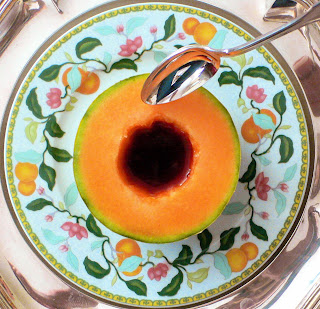It's touching and worth visiting at least once: the animal version of the famous Père-Lachaise cemetery.
 Located on a charming reattached island in the Seine at Asnières, a Paris suburb, it's one of the world's first pet cemeteries in modern times. Like Père-Lachaise, which is a veritable outdoor museum of 19th century mausoleums, le cimetière animalier d'Asnières is filled with extravagantly sculpted tombs and effigies of loved ones. Except here the loved ones are pets of every kind, including a lion and a race horse.
Located on a charming reattached island in the Seine at Asnières, a Paris suburb, it's one of the world's first pet cemeteries in modern times. Like Père-Lachaise, which is a veritable outdoor museum of 19th century mausoleums, le cimetière animalier d'Asnières is filled with extravagantly sculpted tombs and effigies of loved ones. Except here the loved ones are pets of every kind, including a lion and a race horse.
The most famous animal buried here is the original Rin-Tin-Tin, which brings to mind Oscar Wilde's quip that "when good Americans die, they go to Paris. . ."
Established in 1899 at the insistence of feminist, journalist and animal lover Marguerite Durand, the cemetery, classified as a historic monument, has a magnificent Art Nouveau entry designed by the celebrated architect Eugène Petit.
Don't miss the cats: a local association tends to the care and feeding of a sizable population of stray cats that have taken up residence in the cemetery. A shelter has been built just for them.
4 pont de Clichy
92600 Asnièress-sur-Seine
Hours: Closed Mondays. March 16 thru Oct 15, 10 a.m. - 6 p.m.;
Oct 16 thru March 15, 10 a.m. - 4:30 p.m.
Restaurant recommendation of trusted friends: Le Van Gogh. Named in homage to the artist and opened the year of his death, the restaurant is situated on the banks of the Seine, at one of Van Gogh's favorite vantage points for painting landscapes. Fresh fish and seafood. Port Van Gogh at Pont de Clichy. http://www.levangogh.com
Text & photos ©2009 P.B. Lecron
 Located on a charming reattached island in the Seine at Asnières, a Paris suburb, it's one of the world's first pet cemeteries in modern times. Like Père-Lachaise, which is a veritable outdoor museum of 19th century mausoleums, le cimetière animalier d'Asnières is filled with extravagantly sculpted tombs and effigies of loved ones. Except here the loved ones are pets of every kind, including a lion and a race horse.
Located on a charming reattached island in the Seine at Asnières, a Paris suburb, it's one of the world's first pet cemeteries in modern times. Like Père-Lachaise, which is a veritable outdoor museum of 19th century mausoleums, le cimetière animalier d'Asnières is filled with extravagantly sculpted tombs and effigies of loved ones. Except here the loved ones are pets of every kind, including a lion and a race horse. The most famous animal buried here is the original Rin-Tin-Tin, which brings to mind Oscar Wilde's quip that "when good Americans die, they go to Paris. . ."
Established in 1899 at the insistence of feminist, journalist and animal lover Marguerite Durand, the cemetery, classified as a historic monument, has a magnificent Art Nouveau entry designed by the celebrated architect Eugène Petit.
Don't miss the cats: a local association tends to the care and feeding of a sizable population of stray cats that have taken up residence in the cemetery. A shelter has been built just for them.
4 pont de Clichy
92600 Asnièress-sur-Seine
Hours: Closed Mondays. March 16 thru Oct 15, 10 a.m. - 6 p.m.;
Oct 16 thru March 15, 10 a.m. - 4:30 p.m.
Restaurant recommendation of trusted friends: Le Van Gogh. Named in homage to the artist and opened the year of his death, the restaurant is situated on the banks of the Seine, at one of Van Gogh's favorite vantage points for painting landscapes. Fresh fish and seafood. Port Van Gogh at Pont de Clichy. http://www.levangogh.com
Text & photos ©2009 P.B. Lecron





























































